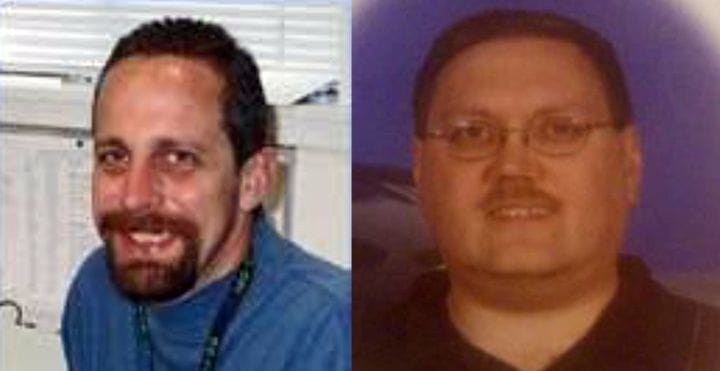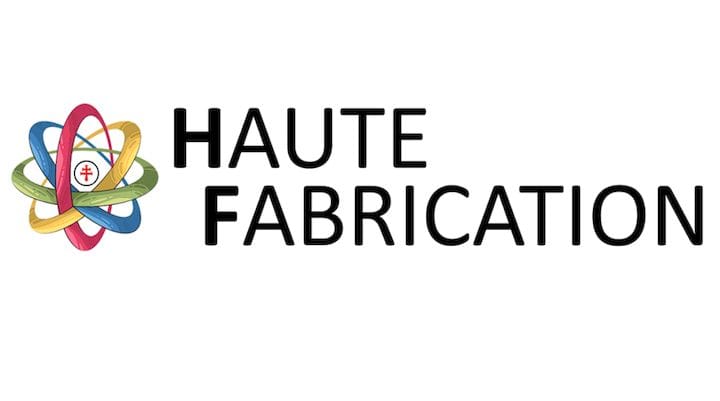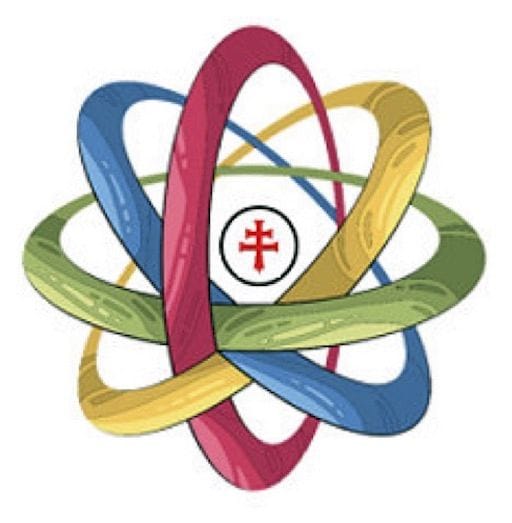![What is Haute Fabrication developing? [Source: Haute Fabrication]](https://fabbaloo.com/wp-content/uploads/2020/05/image-asset_img_5eb09f89cc30a.jpg)
We had a chat with Kevin Friesth, Chief Science Officer/Inventor at Haute Fabrication, regarding their upcoming 3D printers.
Iowa-based Haute Fabrication plans a launch of not just one, but two new 3D printers for thermoplastic and metal using sintering technology. We spoke with their founder, Kevin Friesth, who now acts as their technology lead in the position of CSO under their CEO, Doug Zilm.
They’ve been developing the project for some years, and have been working with Texas-based Structured Polymers, whose team members previously designed, developed and commercialized laser sintering and material sciences at University of Texas.

Fabbaloo: When was Haute Fabrication founded and what was your inspiration?
Kevin Friesth: Efforts started back in 1984 when I was working on designing liquid fueled rocket engines. After developing 14 rocket engines, I ran into fabrication difficulties in that no present technology existed to build the new rocket engine designs or my many other inventions that also had no fabrication method or had methods that was cost effective or timely, this was my undying inspiration to achieve fabrication system success.
Layering type building made sense so I converted an old plotting printer, removed the pen and attached a converted glue gun with a stepper motor screw driven chamber and sleeve to force out the glue to what modern day FDM printers do with filament to build a component by layers. I kept working on research and development even more so once I learned more about laser sintering. This started with a CO2 laser which I was able to fabricate in the same machine shop of my grandfathers’ that I was using to drill, mill, lathe, weld and braze my rocket engine builds and other inventions.
Early on we cut plastic strips and would combine them with ball bearings in a rock polishing tumbler to mill powered plastic. It wasn’t fancy but it worked. Initially we used a scraper design to spread the powder with a screw driven build chamber. Using the old plotter that again was repurposed and utilizing mirrors, I was able to use a gantry style system to fuse the particles in testing to see if I could make the channels I wanted to use in my rocket engine and heat exchanger designs.
Fabbaloo: Who’s behind this initiative?
Kevin Friesth: My name is Kevin Friesth and I am the founder and inventor of the fabrication system design, Artificial intelligence/machine learning system and robotics behind the technology and a rocket propulsion hobbyist.
In order to speed up developments I dual tracked the technologies. I split up the fabrication technologies and the aerospace engineering into two companies. I have since had my daughter, Michaela Spaulding, take over rocket engine development with the new company we formed named Odyssey Aerospace. Michaela is its president and chief rocket scientist. She is a recent graduate from Iowa State University in Aerospace Engineering. She specializes in rocket engine design and propulsion systems.
Fabbaloo: How is the venture funded?
Kevin Friesth: To date the venture has been funding by self-funding along with friends and family, however we are preparing for a funding round on StartEngine in January.
Fabbaloo: How many staff on hand currently at Haute Fabrication?
Kevin Friesth: We work with a few internal staff and a large consortium of advisors, consultants and volunteers.
Fabbaloo: Are you hiring?
Kevin Friesth: As part of the funding efforts we plan to build our next machines and to enlarge our staff.
Fabbaloo: Can you describe the product/process being developed at Haute Fabrication?
Kevin Friesth: We developed a hybrid laser sintering process. The artificial intelligence/machine learning process operates the system through a robotic framework due to everything truly comes down to operating within a 3d space. The system is designed to be automated and fully robotized as such the next build will integrate all the components in a single facility. The software is key to the system that will allow using laser arrays for a very large build volume. This offers the capability of a single fabrication or mass production of a full build area of nested smaller fabrications.
With developments, we are targeting a 9 laser, 2 meter x 2 meter x 2 meter hybrid direct laser sintering systems. There is custom system designs for both polymer based select laser sintering and direct metal laser sintering.
This DMLS system enables metal fabrication of larger full scale high value metal components such as high temp high efficiency monolithic heat exchangers and full scale monolithic rocket engines as well as other specialty items such as full size molds and tools.
The DMLS system will allow development and fabrication of a metal fabrications and for the aerospace company its monolithic rocket engines. That development will allow fabrication of a 35k lbs. thrust and a 620k lbs. thrust rocket engine by fabricating a complete monolithic engine body with the bell within the printer. This method along with installing the pintle injector after fabrication provides for one of the most integrated rocket engine designs with the fewest parts ever built.
The SLS system enables polymer based large parts or mass production of smaller ones as it will also be a 9 laser 2 meter x 2 meter x 2 meter hybrid direct laser sintering system.
The laser fabrication machines are designed to be fully automated and utilizing ROS2 based robotic handling to promote mass production.
Fabbaloo: What was the inspiration behind starting this venture?
Kevin Friesth: In furthering a previous response from above, I would say my inspiration of going farther and faster has been from the support from advisors such as the team members of Structured Polymers that invented laser sintering. They have helped reduce many years from development timelines, mostly from their teams experience learning the hard way as pioneers of the technology. They graciously offering input and guidance that their nearly 35 years of laser sintering experience and deep level of material science expertise could offer us. This helped us make the transition from research and design to application in practice easier, coming from them having been there and done that for multiple decades. We just had to take the time to listen and learn.
Fabbaloo: You say that the process handles both SLS and DMLS? Current machines are typically either, but not always both. How does this work?
Kevin Friesth: Our machines are not combined into a single machine but were co-developed as separate systems and operational parameters as a SLS machine and its specific characteristics, the DMLS machine has its own very specific design requirements and has very high temperature issues that are distinct to its operations.
The technologies do differ in certain methods and processes but to the control systems it’s a matter of materials requirements, temperature and its management. After nearly 8 years of working with melt pools and patterns they share a great deal of similarities from a system control perspective
Fabbaloo: What is the secret behind the increased speed of the machine?
Kevin Friesth: The secret sauce so to speak is unique system design features amalgamated with artificial intelligence and the cloud that operates and learns from its oper
ations to enhance while in operation and its parameters real time and accumulate data for learning over time. This allows the system to increase performance and quality simply by operating. Openstack cloud and now together with StarlingX edge cloud will enable this a ROS2 (Robotic Operating System V2) automated mass production factory.We are working on our control system along with the long established Smoothie board and Smoothie firmware team that are working with us on the control hardware and firmware for our SLS and for the DMLS prototypes, additionally we are using modified smoothie board v1 and firmware for our printer prototype. The smoothie board and smoothie firmware are open source developments is supported by Robotseed and Uberclock and the community of Smoothie volunteers.

Fabbaloo: What is your target market with these machines?
Kevin Friesth: We are targeting mass production with our commercial systems primarily as on-demand fabricators for parts and assemblies. We will be launching light commercial and prosumer machine versions in cooperation with Robotseed and Uberclock for the 3D communities and fabricators at large.
Fabbaloo: When do you feel the machine will be released for beta testing and for general purchase?
Kevin Friesth: We are planning for a June launch of our pre-commercial prototype. We will launch the other systems we plan on selling, at a later date.
Fabbaloo: What price range are you thinking for this machine?
Kevin Friesth: Regarding the light commercial and prosumer systems, we will be working with Smoothie and the Smoothie community to determine pricing after both our prospective launches.
Fabbaloo: What is your strategy for selling the machine? Direct? Resellers? White labeling? Kickstarter??
Kevin Friesth: After our funding launch on StartEngine for our corporate launch and funding of our pre-commercial prototype and the Smoothie board team’s impending Kickstarter launch of their new Smooth board v2 with the Mini, Prime and Pro board options. We will work together towards a Kickstarter launch and white label sales of the new SLS and DMLS light commercial and prosumer machines.











Elizabeth C. Engele (Lizzy) is a designer for social good, and a founder of MakerGirl.